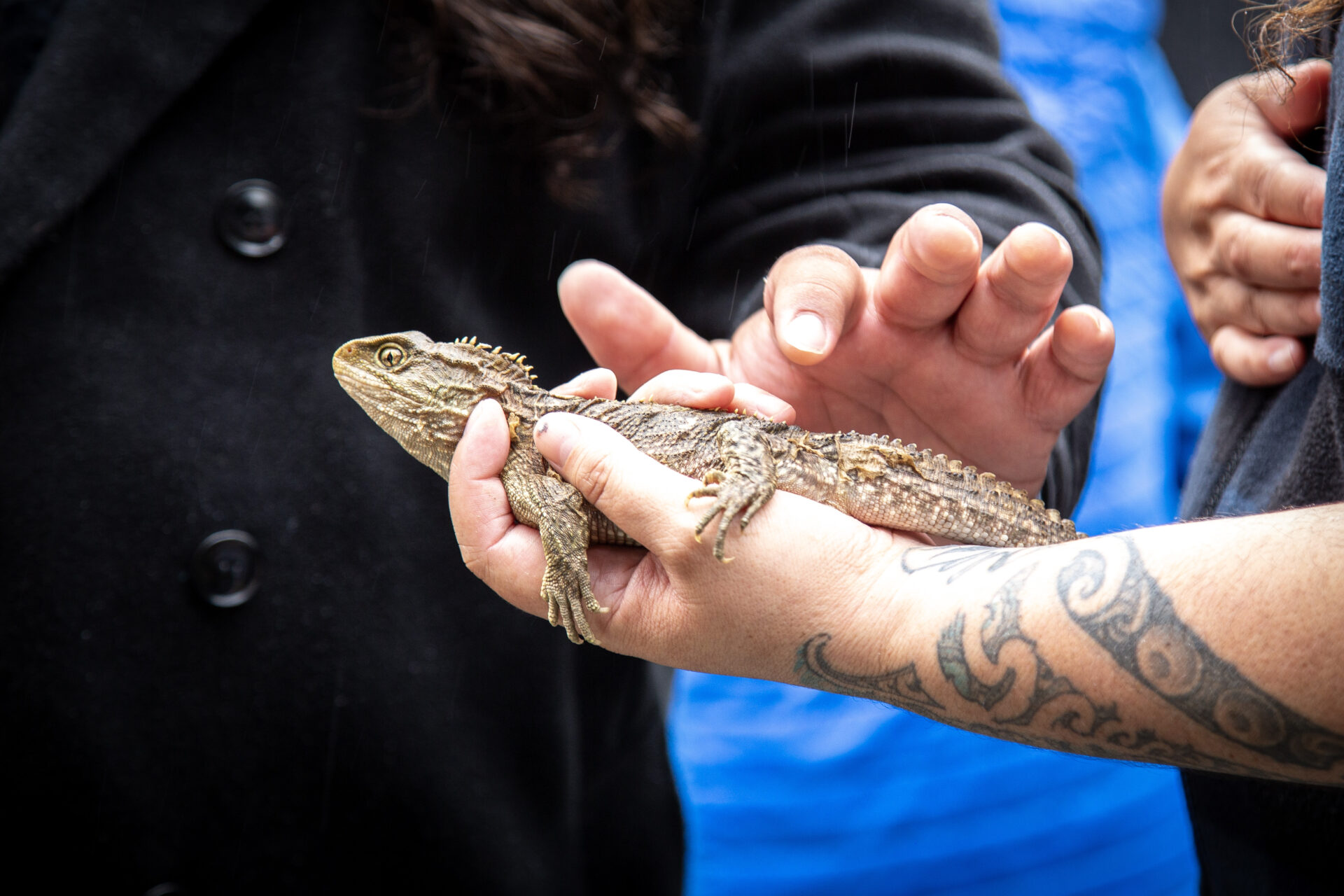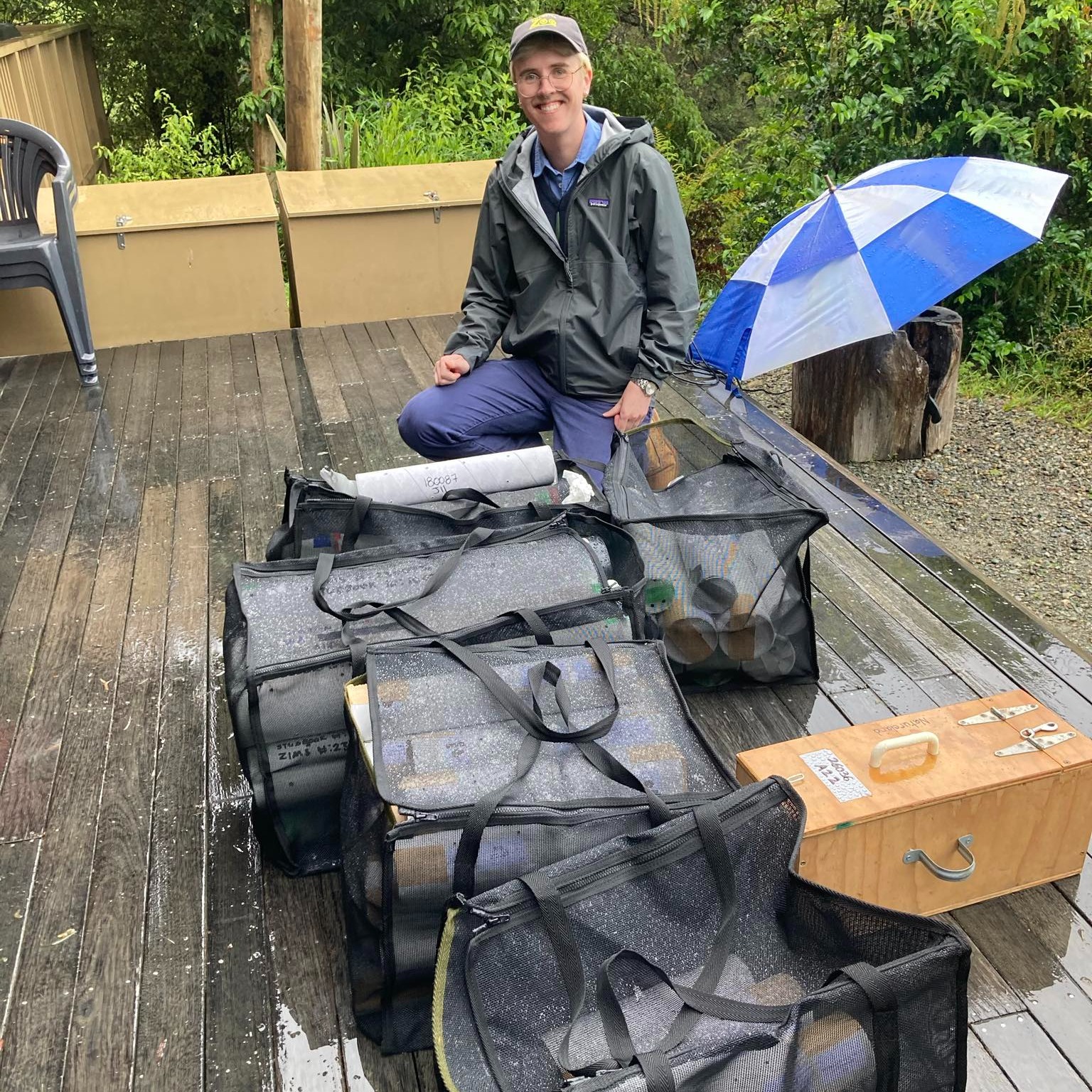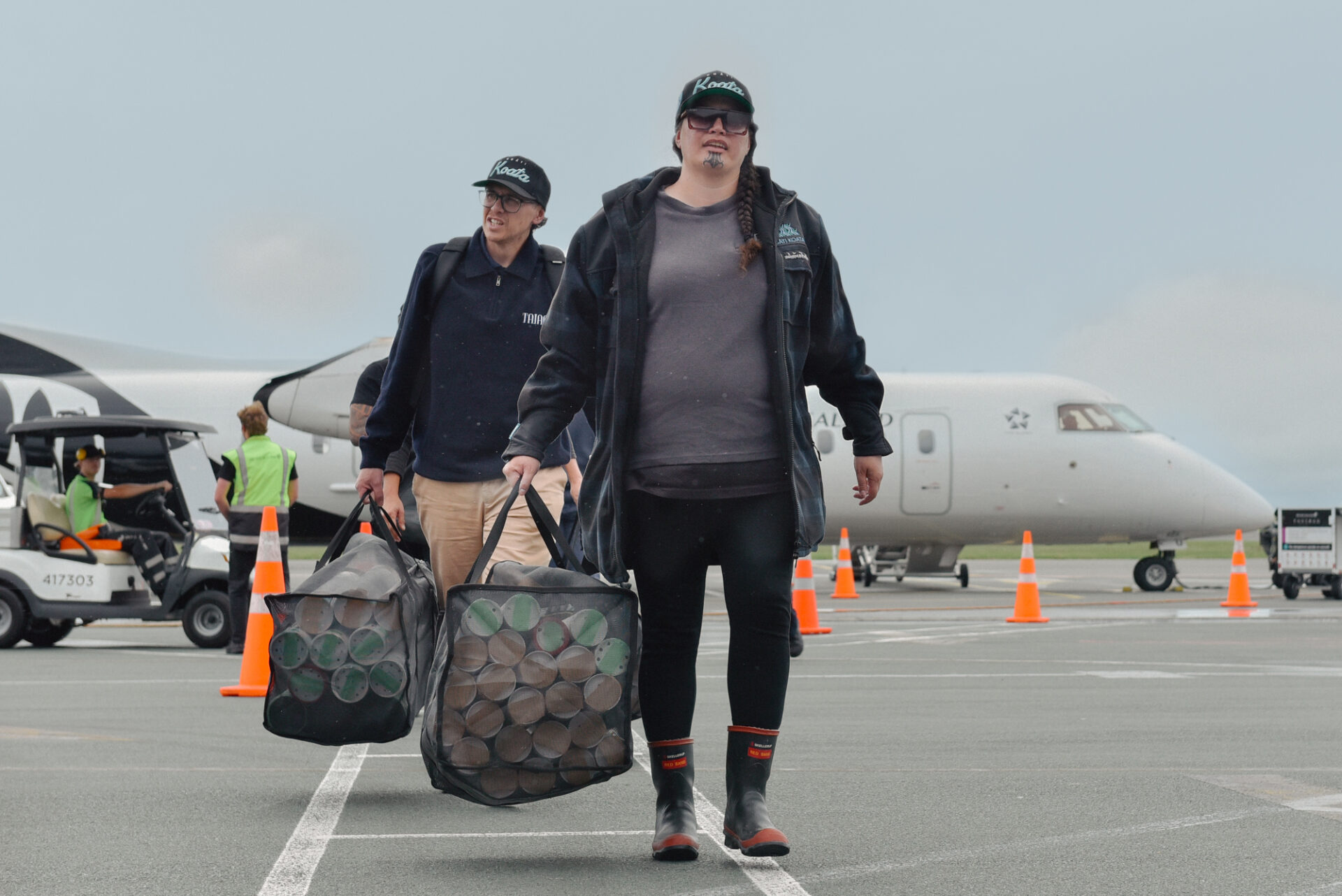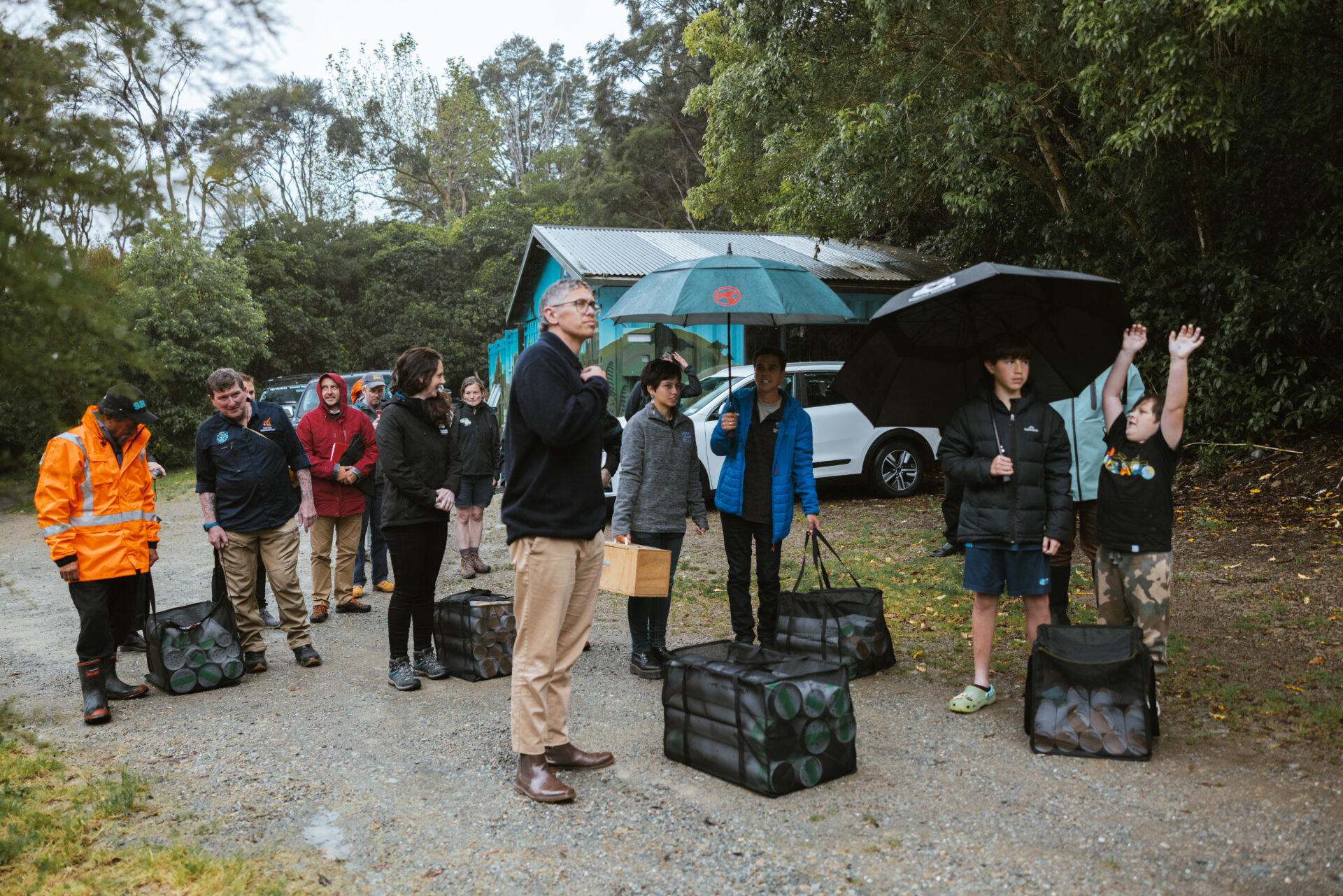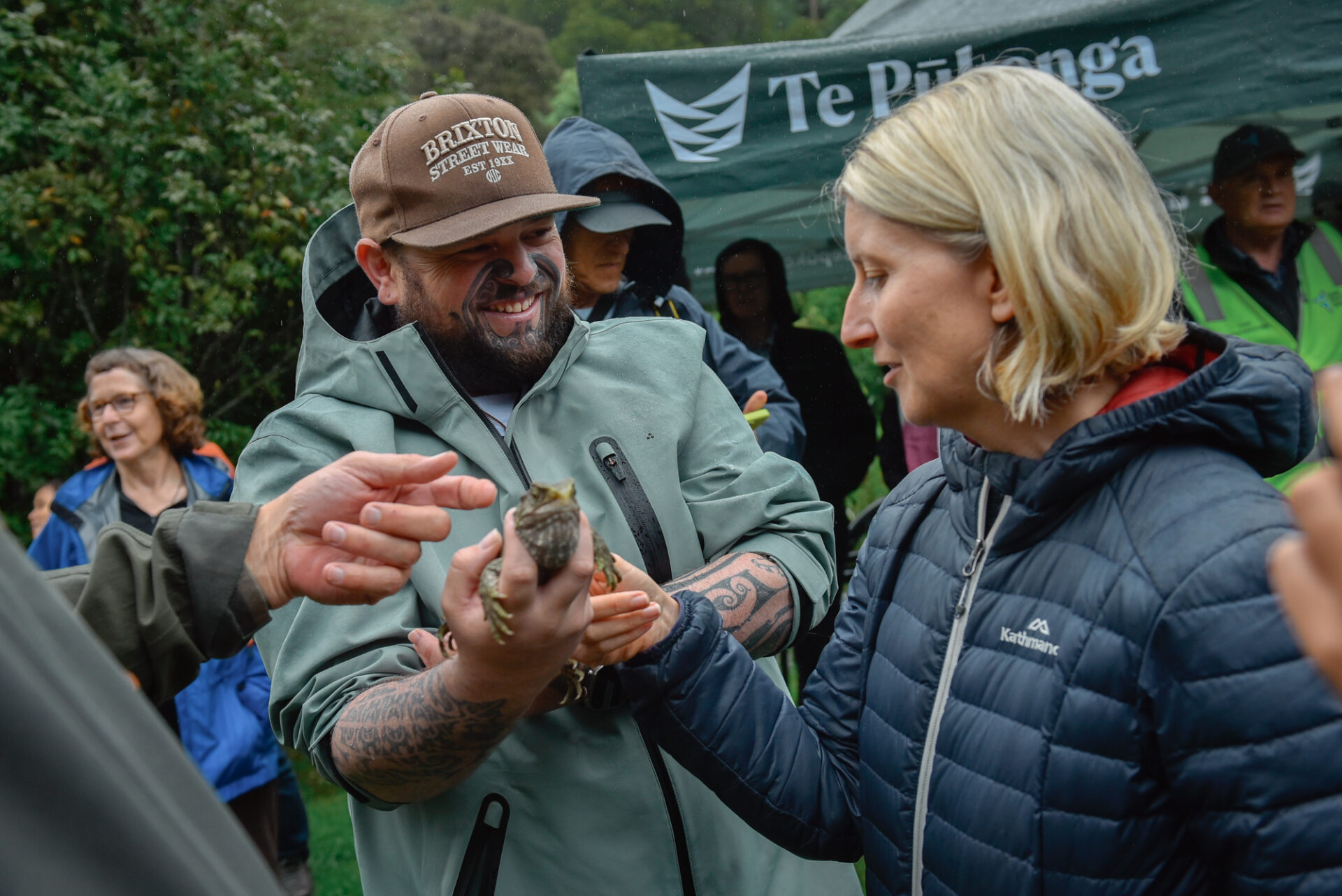Translocation of tuatara
Tuatara have been returned to their ancient homeland of Whakatū Nelson. A momentous event for Ngāti Koata Trust, the kaitiaki of takapourewa tuatara, and the Brook Waimārama Sanctuary.
Fifty-six tuatara were translocated into the Sanctuary’s wilds. Each individual was released into a pre-drilled burrow with a unique “house number.” The tuatara were translocated from six different captive source sites from Franz Josef to Palmerston North at:
Central Energy Trust Wildbase Recovery, Wildbase, Ngā Manu Nature Reserve, Wellington Zoo Te Nukuao, Natureland Wildlife Trust, West Coast Wildlife Centre
This translocation is especially important as is the first release of tuatara into the wild in Whakatu/Nelson region in over 100 years. This is a significant cultural milestone for the city of Nelson, for the region, and for iwi Māori, particularly for Ngāti Koata who act as the national gatekeepers for this iconic species. We would like to thank Ngāti Koata for supporting for our application and planning to bring tuatara back to Whakatu/Nelson.
Ngāti Koata were very actively involved with the translocation of these iconic creatures.
We received a mixture of juvenile young tuatara through to mature adults. They are now living free in our mouse-free exclosure at the Sanctuary. These ancient reptiles, often called living fossils, will add a fascinating dimension to our conservation efforts. Our dedicated team worked diligently to ensure that their new habitat is ideally suited to their needs, replicating the conditions of their natural environment as closely as possible.
Visitors will have the unique opportunity to observe these remarkable creatures up close and learn about their unique evolutionary history and ecological significance.
The arrival of the tuatara is a milestone for the Sanctuary and a testament to our ongoing commitment to preserving New Zealand’s unique wildlife.
The translocation of tuatara to the Sanctuary would not have been possible without the financial assistance of the following:
The Frimley Foundation, Booster Wine Group, WWF-New Zealand, and a number of private individuals who made donations for this project.
What does this mean for us?
The translocation of tuatara to the Sanctuary follows the earlier release of tīeke (saddleback) into the Sanctuary in April 2021, kākāriki karaka (the orange fronted parakeet) and powelliphanta (native carnivorous land snails). Such translocations signal that the Department of Conservation, local iwi and others are confident that we have the necessary bio-security policies, procedures, infrastructure and technical expertise to ensure reintroduced species have the best possible chance of survival and to increase in numbers. This opens the way to further reintroductions, the Sanctuary’s vision is to return a number of species such as kākā, kiwi, and others to the Sanctuary habitat.
What is a successful translocation?
Establishment is achieved when a population has become self-sustaining. Depending on the release environment and species involved, this may take several years and may require multiple follow-up translocations to ensure that the population is large enough, and has sufficient genetic diversity, for long-term stability.
There are many factors that contribute to a successful translocation, among them handling the creatures with care, selecting healthy individuals, minimizing stress and preventing overheating during transport and release.
Now that tuatara have been released into a mouse-free area, maintaining the biosecurity predator-free status of the Sanctuary, and the mouse-free status within the specially built mouse exclosure fence will be essential. There will be ongoing post-translocation monitoring of the tuatara by Shaaleigh Read, a Wildlife Management Masters student from the University of Otago. Post-translocation biosecurity efforts includes maintaining the integrity of the fence, rapid and effective responses to breaches, ongoing monitoring to detect predator incursions and continuing regular Sanctuary-wide pest surveys. While this is already being done, there will have to be greater vigilance from now on.
The translocation process
In November 2024 a specially-trained translocation team of Sanctuary staff, volunteers and personnel from tuatara kaitiaka Ngati Koata travelled to Frans Josef (West Coast Wildlife Centre), Wellington (Wellington Zoo), the Ngā Manu Nature Reserve in Waikanae, and Palmerston North (Massey University and the Central Energy Trust Wildbase Recovery) to collect the selected tuatara from captive populations at these facilities. Some of the tuatara were sourced from Natureland in Nelson.
What you can do to help
The Sanctuary needs to continue to be predator-free which means high biosecurity vigilance, so we need lots of volunteer help with pest monitoring surveys, we also need donations and supporter fees to help cover our operational costs. Why not join us?
People can help by observing the rule of not walking their dogs close to the outside of the fence of the Sanctuary.
Anyone interested in becoming a volunteer, please click here
Financial support
If you wish to make a donation or find out more about becoming a supporter or sponsor of the Sanctuary, please click here

